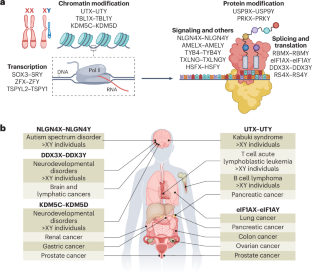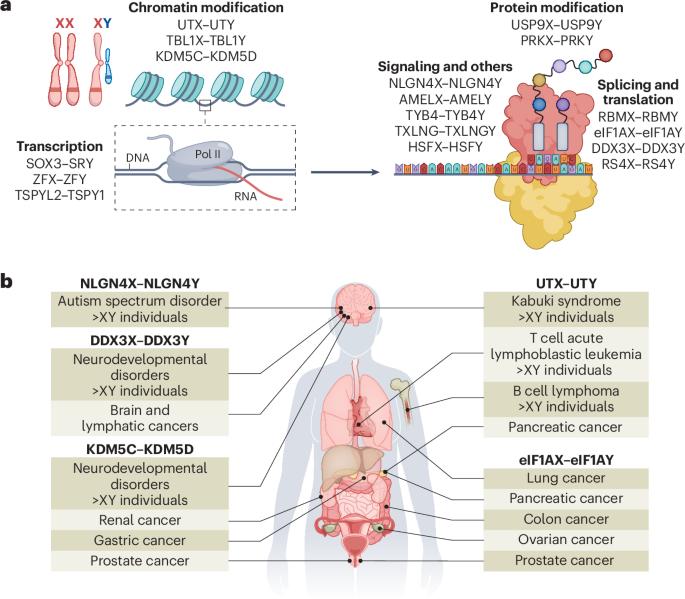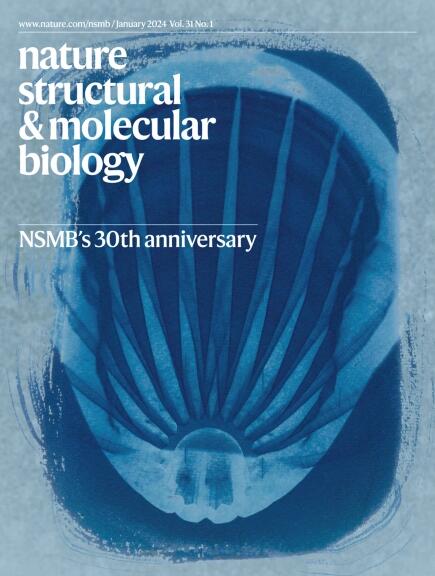性染色体编码蛋白同源物:当前进展与未决问题
IF 12.5
1区 生物学
Q1 BIOCHEMISTRY & MOLECULAR BIOLOGY
引用次数: 0
摘要
生物性别差异的复杂性在人类生理学和病理学中显而易见。虽然其中许多差异可归因于性激素的表达,但性别差异的另一个原因在于性染色体在性别决定中的作用。人类的性染色体虽然在很大程度上是非同源的,但它表达了 17 对同源基因,被称为 "X-Y 对"。这些 Y 编码蛋白的 X 染色体编码同源物在多个细胞过程中起着至关重要的作用,它们的失调经常导致疾病的发生。许多与这些 X 染色体编码同源物相关的疾病在发病率或严重程度上都存在性别差异。相比之下,人们对 Y 连锁同源物的不同功能知之甚少。在这里,我们总结并讨论了目前对其中五种 X-Y 配对蛋白的认识,这些蛋白最近有证据表明它们具有不同的功能,并与疾病中的性别偏见有潜在的联系,我们将重点介绍氨基酸水平的序列差异可能如何区分它们的功能并导致人类疾病中的性别偏见。本文章由计算机程序翻译,如有差异,请以英文原文为准。


Sex chromosome-encoded protein homologs: current progress and open questions
The complexity of biological sex differences is markedly evident in human physiology and pathology. Although many of these differences can be ascribed to the expression of sex hormones, another contributor to sex differences lies in the sex chromosomes beyond their role in sex determination. Although largely nonhomologous, the human sex chromosomes express seventeen pairs of homologous genes, referred to as the ‘X–Y pairs.’ The X chromosome-encoded homologs of these Y-encoded proteins are crucial players in several cellular processes, and their dysregulation frequently results in disease development. Many diseases related to these X-encoded homologs present with sex-biased incidence or severity. By contrast, comparatively little is known about the differential functions of the Y-linked homologs. Here, we summarize and discuss the current understanding of five of these X–Y paired proteins, with recent evidence of differential functions and of having a potential link to sex biases in disease, highlighting how amino acid-level sequence differences may differentiate their functions and contribute to sex biases in human disease. Here, the authors examine and discuss the functional complexity and cellular implications of X–Y pairs, homologous genes expressed in the human sex chromosomes.
求助全文
通过发布文献求助,成功后即可免费获取论文全文。
去求助
来源期刊

Nature Structural & Molecular Biology
BIOCHEMISTRY & MOLECULAR BIOLOGY-BIOPHYSICS
CiteScore
22.00
自引率
1.80%
发文量
160
审稿时长
3-8 weeks
期刊介绍:
Nature Structural & Molecular Biology is a comprehensive platform that combines structural and molecular research. Our journal focuses on exploring the functional and mechanistic aspects of biological processes, emphasizing how molecular components collaborate to achieve a particular function. While structural data can shed light on these insights, our publication does not require them as a prerequisite.
 求助内容:
求助内容: 应助结果提醒方式:
应助结果提醒方式:


